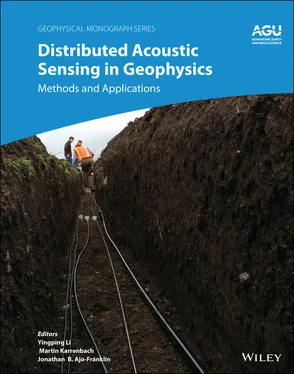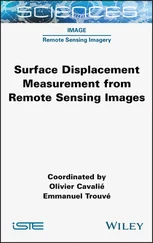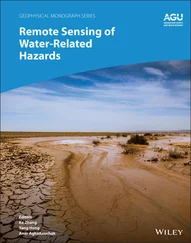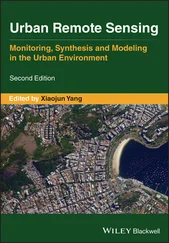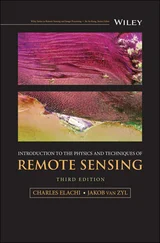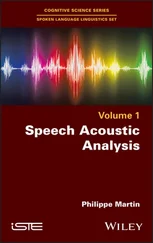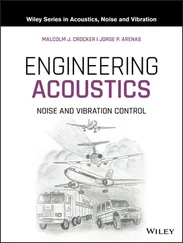A comparison of DAS acoustic noise with standard and engineered fiber is presented in Figure 1.32. Noise spectral density versus distance is practically constant for engineered fiber (b) but varies significantly for standard fiber from channel to channel along distance (a). In other words, we can conclude that standard DAS noise depends on fiber randomness and can be far from the average value, but engineered fiber DAS noise is predictable. The SNR difference is emphasized by the signal Fourier transform in the bottom chart (c): the noise reduction for engineered fiber is nearly 20 dB as was expected from shot noise estimation ( Equation 1.46).
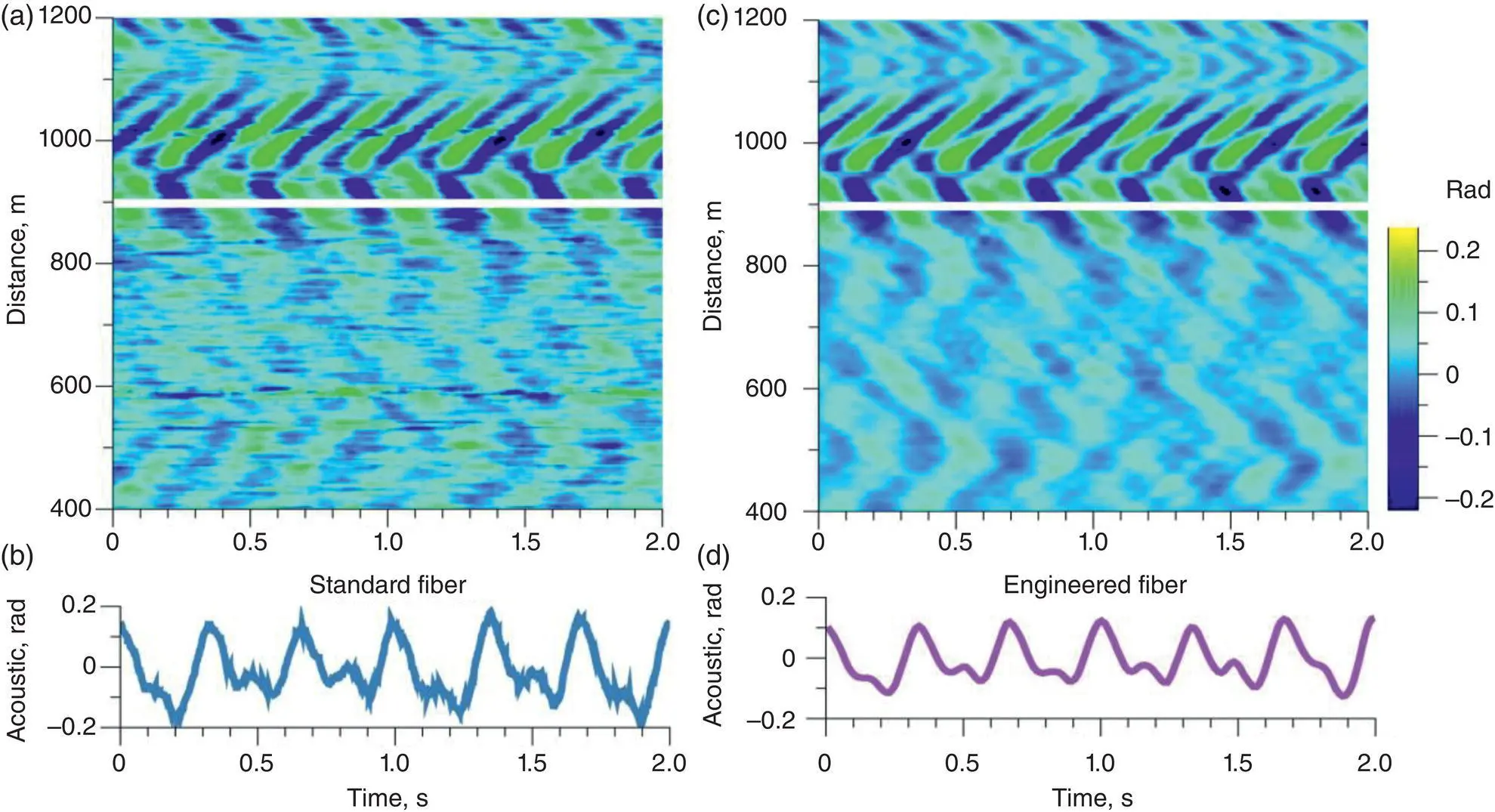
Figure 1.31 Comparison of DAS with Rayleigh scattering [(a) and (b)] and engineered fiber [(c) and (d)] for a seismic sweep signal. Acoustic signals are measured in optical phase radians.
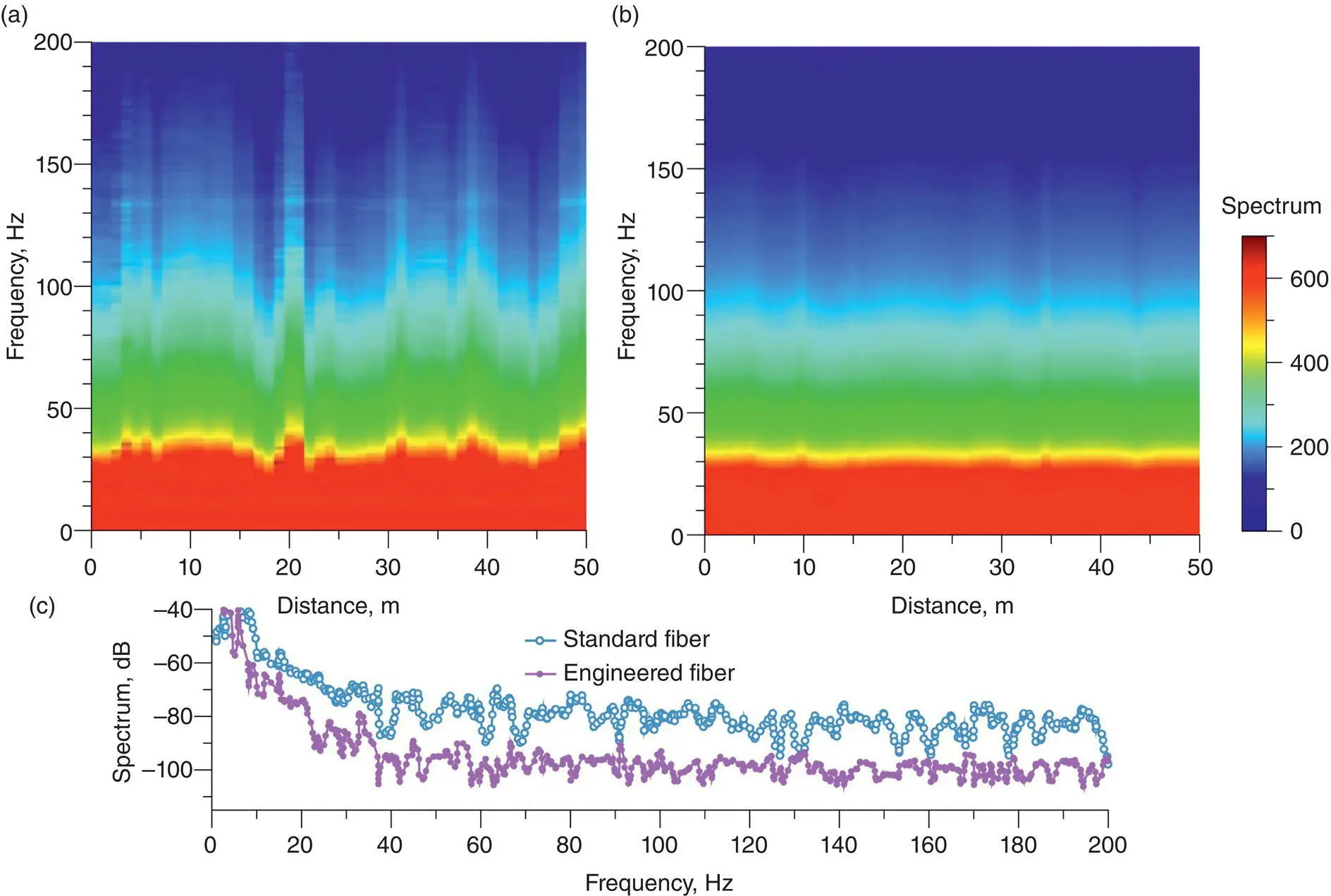
Figure 1.32 Comparison of DAS noise spectrums with Rayleigh scattering (a) and engineered fiber (b). Panel (c) represents acoustic noise spectrum density with respect to 1 rad/Hz0.5.
Source: Based on Richter et al. (2019).
Fine spatial resolution in combination with good sensitivity gives DAS a significant advantage for detection of microseismic events, particularly where a geophone chain cannot be readily positioned. Such measurements are used in fracking jobs, where a wireline fiber optic cable is pumped down into an already completed observation well (Richter et al., 2019). This gives the possibility to determine the frack height and well interference with unprecedented clarity.
A typical microseismic event is presented in Figure 1.33, where both S‐ and P‐waves are clearly visible, such that the distance from observation well to fracking event can be easily detected. Figure 1.34shows how the same installation can be used to detect a “frac hit,” where a fracking zone and strain extends slowly from the well undergoing treatment to the observation well. This new data allows completion engineers to map the depth, azimuth, and speed of the fractures and feed that information back into the fracture models to validate and optimize the designs for the next operation.
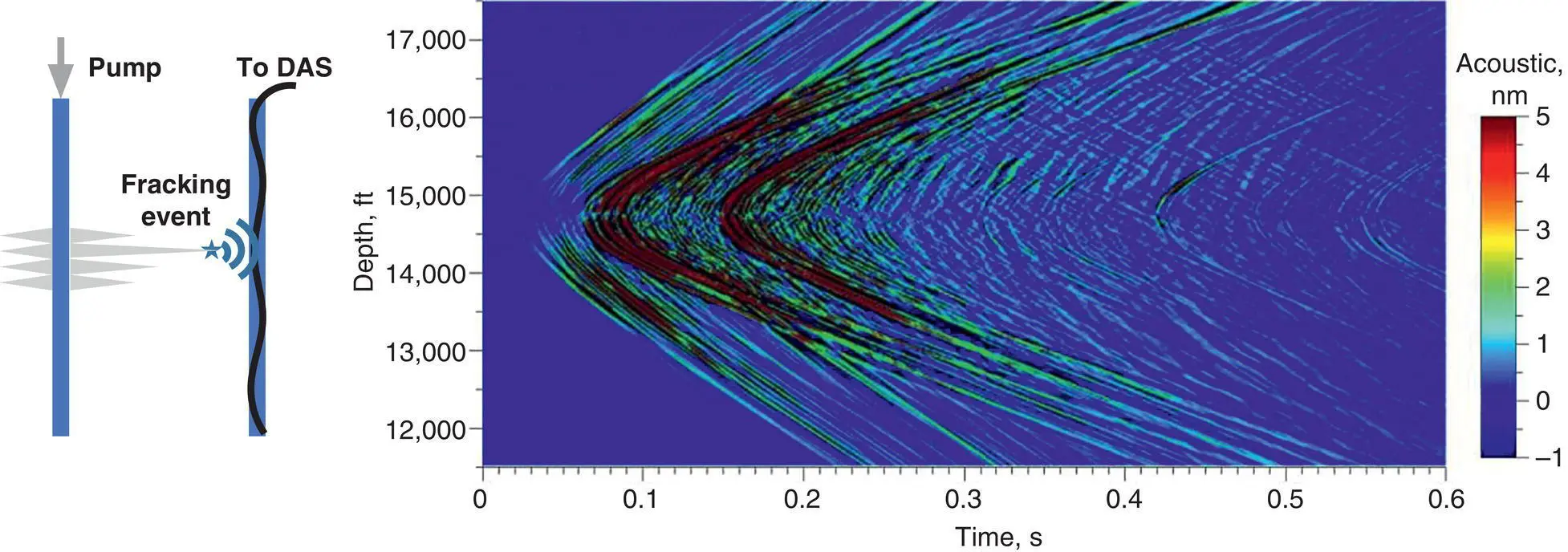
Figure 1.33 Microseismic event in observation well detected by DAS with engineered fiber.
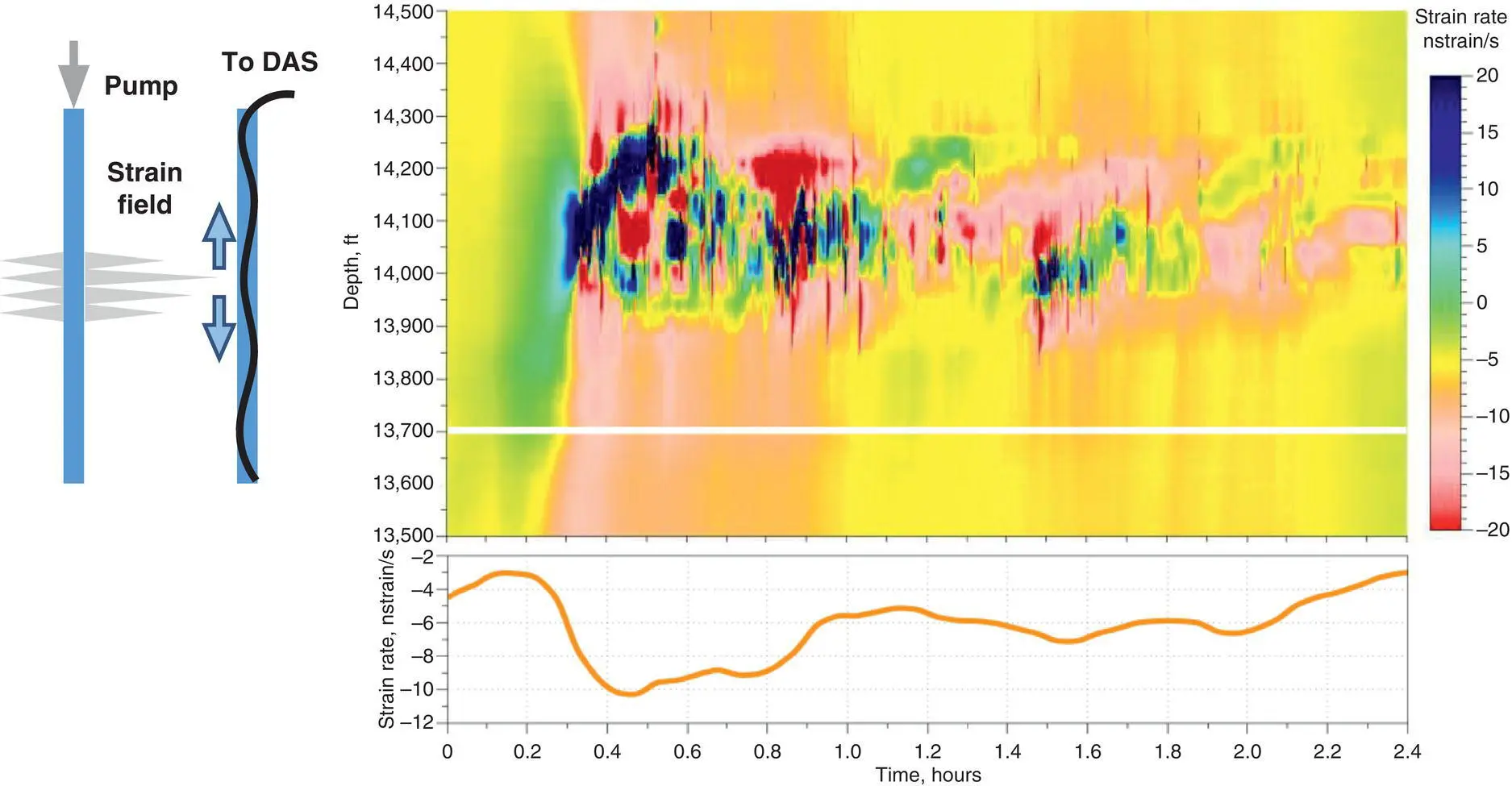
Figure 1.34 Example of low frequency (down to millihertz level) “slow strain” data, showing a fracking hit on an observation well from a well undergoing treatment. The time‐averaged signal cross‐section along the white line is shown in the bottom panel.
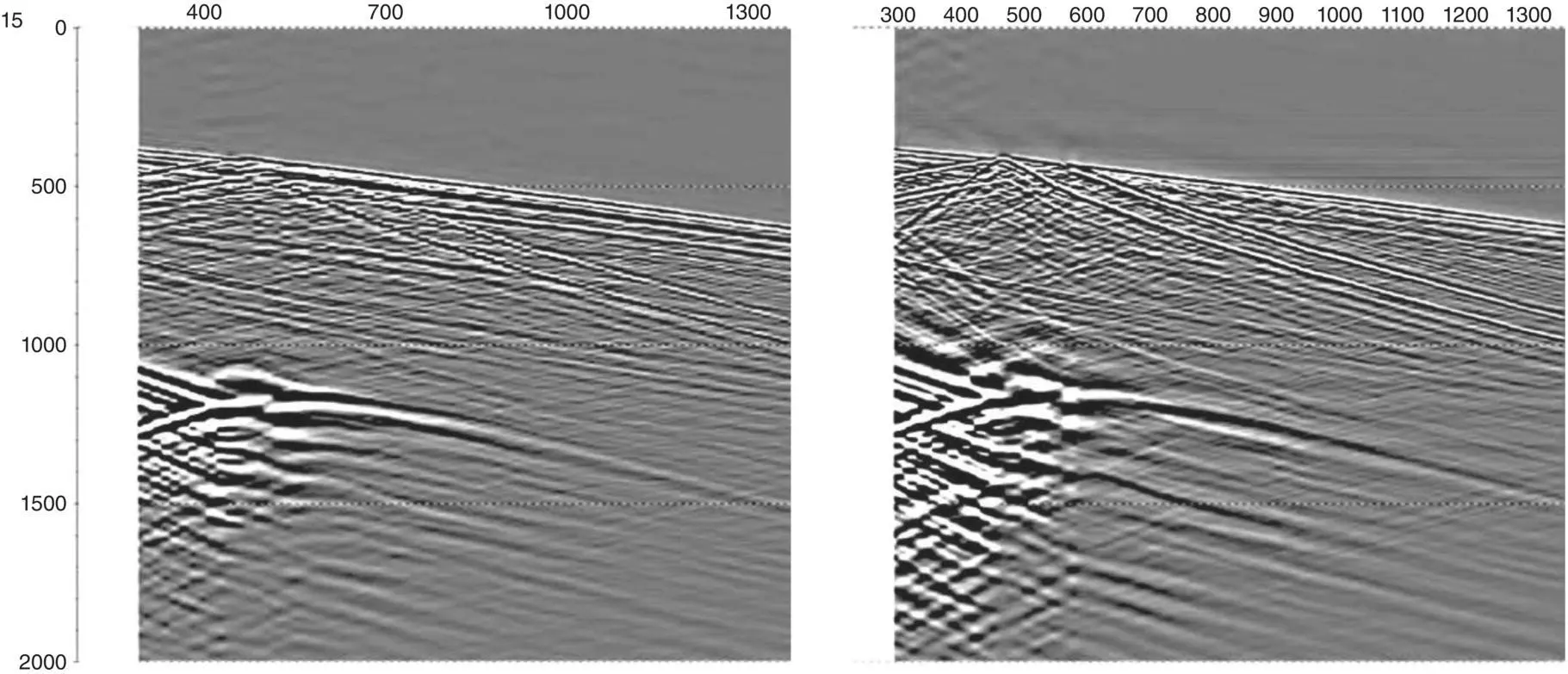
Figure 1.35 Comparison of geophones (left panel) and DAS with engineered fiber (right panel).
The results from a VSP survey in a carbon sequestration well (Correa et al., 2017) demonstrate that DAS with engineered fiber has the potential to provide similar, or even superior, quality data sets as compared to conventional geophones. An important aspect is that, due to the higher spatial sampling, DAS data has the capability to provide more detailed velocity information as compared to geophones. This conclusion was expected from the preceding theory and is illustrated in Figure 1.35, which demonstrates even a finer reflection structure from DAS than from geophones.
In summary, we have estimated the main DAS performance parameters for standard and engineered fiber and provided field data that correspond to the theoretical predictions of improved sensitivity and dynamic range.
The authors would like to thank Roman Pevzner and Valeriya Shulakova (of CO2CRC, Curtin University) and Thomas M. Daley, Barry M. Freifeld, Jonathan Ajo‐Franklin, and Shan Dou (of the Lawrence Berkeley National Laboratory) for the use of raw and processed surface seismic data and the presented field geometry. The authors would also like to acknowledge the significant help and support from their colleagues at Silixa. In addition, the authors thank the reviewers for their helpful comments in preparing this manuscript.
1 Abbott, R. E., Mellors, R. E., & Pitarka, A. E. (2019). Distributed acoustic sensing observations and modeling of the DAG series of chemical explosions. Paper presented in CTBT Science & Technology 2019 Conference, T2.3‐P12. https://ctnw.ctbto.org/ctnw/abstract/32643
2 Baird, A. (2020). Modelling the response of helically wound DAS cables to microseismic arrivals. Paper presented in First EAGE Workshop on Fibre Optic Sensing (Vol. 2020, No. 1, pp. 1–5). European Association of Geoscientists & Engineers.
3 Benioff, H. (1935). A linear strain Seismograph. Bulletin of the Seismological Society of America, 25(4), 283–309.
4 Brennan, D. G. (1959). Linear diversity combining techniques. Proceedings of the IRE, 47(6), 1075–1102. doi: 10.1109/JRPROC.1959.287136
5 Carroll, J., & Huber, D. (1986). A fiber‐optic hydrophone with a mechanical anti‐aliasing filter. Journal of Lightwave Technology, 4(1), 83–86.
6 Correa, J., Egorov, A., Tertyshnikov, K., Bona, A., Pevzner, R., Dean, T., et al. (2017). Analysis of signal to noise and directivity characteristics of DAS VSP at near and far offsets—A CO2CRC Otway Project data example. The Leading Edge, 36(12), 994a1–994a7. doi: 10.1190/tle36120994a1.1
7 Crickmore, R. I., & Hill, D. J. (2010). U.S. Patent No. 7,652,245. Washington, DC: U.S. Patent and Trademark Office.
8 Crickmore, R., & Ku, E. (2017). U.S. Patent Application No. 15/309,076.
9 Dakin, J. P. (1990). Distributed fibre optic sensor system. UK Patent, GB2222247A.
10 Dakin, J., & Culshaw, B. (Eds.). (1989). Optical fiber sensors: Systems and applications (Vol. 2, Chap. 15). Artech House Optoelectronics. Norwood, Massachusetts.
11 De Rosa, M., Carberry, J., Bhagavatula, V., Wagner, K., & Saravanos, C. (2002). High‐power performance of single‐mode fiber‐optic connectors. Journal of Lightwave Technology, 20(5), 851.
12 Ellis, R. (2007). Explanation of reflection features in optical fiber as sometimes observed in OTDR measurement traces. Corning White Paper.
13 Farhadiroushan, M., Finfer, D., Strusevich, D., Shatalin, S., & Parker, T. (2021). Non‐isotropic acoustic cable. U.S. Patent Application No. 15/804,657.
14 Farhadiroushan, M., Parker, T. R., & Shatalin, S. (2010). Method and apparatus for optical sensing. WO2010136810A2.
15 Farhadiroushan, M., Parker, T., & Shatalin, S. (2021). U.S. Patent No. 10,883,861. Washington, DC: U.S. Patent and Trademark Office.
16 Finfer, D. C., Mahue, V., Shatalin, S., Parker, T., & Farhadiroushan, M. (2014, October). Borehole flow monitoring using a non‐intrusive passive distributed acoustic sensing (DAS). Paper presented in SPE Annual Technical Conference and Exhibition. Society of Petroleum Engineers. doi: 10.2118/170844‐MS
17 Fougerat, A., Guérineau, L., & Tellier, N. (2018). High‐quality signal recording down to 0.001 Hz with standard MEMS accelerometers. Paper presented in SEG Technical Program Expanded Abstracts 2018 (pp. 196–200). Society of Exploration Geophysicists.
Читать дальше
